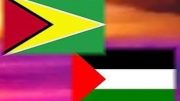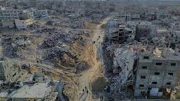The Western Film Formula of Dehumanisation
In classic Western movies and films, especially those made from the 1930s through the 1960s, the plots involving Native Americans (“Indians”) often followed a few recurring themes. These portrayals were usually romanticised, simplified, or stereotyped, reflecting Hollywood rather than real history. Here are the main plot patterns:
1. “Settlers vs. Savages” Conflict:
Most common early plot. The colonisers depicted Native Americans as a threat to white settlers or pioneers moving westward.
2. U.S. Cavalry vs. Native Tribes
The U.S. Army cavalry was shown as disciplined heroes keeping the frontier safe.
3. The “Noble Savage” Romantic Plot
A softer but still stereotypical portrayal.
4. Wronged or Betrayed Tribes (Revisionist Westerns)
In the late 60s and 70s, Westerns began challenging earlier stereotypes.
5. The “Adopted White Hero” Narrative
A white protagonist lives among Natives and becomes a bridge between cultures.
6. Revenge or Retaliation Plots
Used to justify violence on either side.
7. Mystical or Supernatural Native Roles
Natives are portrayed as spiritually connected to nature.
Overall Themes
Western films typically framed stories around:
- Frontier expansion
- Conflict over land and resources
- Cultural misunderstandings or stereotypes
- Heroism vs. “savagery”
- Colonial guilt and critique
PARALLELS TO PORTRAYAL OF NATIVES, PALESTINIANS AND OTHER OPPRESSED PEOPLE
How Hollywood created a template for portraying indigenous peoples as threats, obstacles, or lesser humans. Let us explore how Palestinians are dehumanised today and how these methods mirror the plot lines used against Native peoples in classic Western films. This comparison exposes a pattern: a dominant power justifying violence, dispossession, and control by portraying the oppressed as less than fully human.
1. Dehumanisation in Western Films: The Template
Classic Western films created narratives that made settler-colonial violence seem reasonable, or even heroic.
A. Portraying Natives as violent, irrational, or savage
Films depicted Native Americans as:
- “Dangerous hordes” are attacking for no reason
- Irrational, impulsive, warlike
- Threats that must be “neutralised”
B. Reducing them to stereotypes
No individuality, no personal stories, no humanity. Just faceless tribes.
C. Depicting their land as empty or wasted
Western films portrayed land as unused, wild, or in need of white settlement.
D. Justifying repression as “self-defence”
Because Natives were portrayed as inherently dangerous, whatever settlers or the cavalry did became “protection.”
E. Showing colonisers as reluctant but necessary agents of violence
The white hero “had no choice” but to kill or remove the Indigenous “threat.”
These tropes weren’t just storytelling—they were propaganda that shaped public perception of Indigenous peoples.
Palestinians and Modern Dehumanisation Narratives
How similar discourses today reduce Palestinians to abstractions or security risks. The methods used to dehumanise Palestinians in real life are strikingly similar, often identical, to the Hollywood patterns used against Native peoples.
Here’s how the parallels map:
Parallel 1: Depicting the Oppressed as the Aggressor
Western Films
Natives were framed as aggressors, even though they were defending their land from invasion.
Palestinians Today
Palestinians are often portrayed as:
- “Terrorists”
- A demographic threat
- An inherently violent population
- A security risk rather than people with rights
This flips the reality: the population under occupation becomes the “danger,” and the occupying force becomes the “defender.”
Parallels:
Both narratives turn the oppressed into the aggressor to justify violence.
Parallel 2: Erasure of Their Humanity and Identity
Western Films
Natives appear as nameless masses; no individual stories, no personal suffering.
Palestinians Today
Modern discourse often reduces Palestinians to:
- Casualty numbers rather than names
- “Human shields” rather than human beings
- A faceless mass rather than families, children, students, doctors
- “A problem,” not a people
Language commonly used in media and politics:
- “Collateral damage”
- “Targeted strikes”
- “Security operations”
- These terms erase the human reality behind each life.
Parallels:
Both groups (Natives and Palestinians) are treated as abstractions, not as individuals.
Parallel 3: Justifying Dispossession as Necessity
Western Films
Land was taken from Native peoples because:
- They “weren’t using it properly”
- “Civilisation” needed to spread
- Settlers “needed space”
Palestinians Today
Land confiscation, displacement, and settlement expansion are justified through:
- “Security zones”
- “Military necessity”
- “State expansion”
- “Uninhabited land” (even when inhabited)
Like Indigenous land in America, Palestinian land is portrayed as strategically empty or underdeveloped.
Parallels:
The colonising power frames itself as rational and constructive, while the Indigenous population is seen as in the way.
Parallel 4: Depicting Resistance as Proof of Savagery
Western Films
When Native tribes resisted displacement, their resistance was portrayed as barbaric.
Palestinians Today
Any form of resistance, violent or peaceful,is:
- Criminalised
- Used to justify more repression
- Portrayed as proof that Palestinians are inherently violent
Even peaceful protests, journalism, and humanitarian work are criminalised or suppressed.
Parallels:
Indigenous defence of their own land becomes evidence of their “danger.”
Parallel 5: Denying the Right to Exist as a Nation
Western Films
Natives had no sovereignty. The colonial settlers did not recognise their nations.
Palestinians Today
Palestinian nationhood is often:
- Questioned
- Dismissed
- Politically undermined
- Treated as negotiable or non-existent
The struggle for identity mirrors that of Indigenous nations whose existence was denied.
Parallels:
Both are treated as people who must “accept” the reality imposed on them.
Parallel 6: Representing Them as Obstacles to Progress
Western Films
Settlers brought “progress”; Natives were obstacles.
Palestinians Today
Narratives often frame Palestinians as:
- Obstacles to peace
- Obstacles to development
- Barriers to regional stability
Their removal, whether physical or political, is framed as a step toward “stability.”
Parallels:
A dominant group portrays itself as enlightened and the Indigenous population as hindering modernisation.
Parallel 7: Scapegoating the Victims for Their Own Suffering
Western Films
Native poverty, displacement, and suffering were blamed on:
- Their “backwardness”
- Their “failure to adapt”
Palestinians Today
Palestinian humanitarian suffering is blamed on:
- “Their leadership”
- “Their culture”
- “Their refusal to cooperate”
Instead of acknowledging structural oppression, the narrative places blame on the victims.
Parallels:
Victims are blamed for the consequences of colonisation.
Why These Parallels Matter
Both sets of narratives were constructed for the same purpose:
. To justify domination.
. To erase moral responsibility.
.To make the suffering of an entire people seem natural or deserved.
The dehumanisation of both Native peoples in cinema and Palestinians in reality follows a blueprint:
- Reduce them to a threat, portray them as less human, justify their removal, and glorify the coloniser.
This is not accidental; it is structural.




